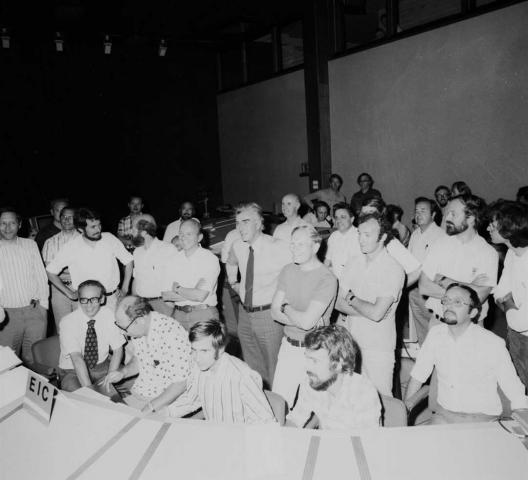The Super Proton Synchrotron starts up

The Super Proton Synchrotron (SPS) became the workhorse of CERN’s particle physics programme when it switched on in 1976. The first beam of protons circulated the full 7 kilometres of the accelerator on 3 May 1976. The picture above shows the SPS control room on 17 June 1976, when the machine accelerated protons to 400 GeV for the first time. Research using SPS beams has probed the inner structure of protons, investigated nature’s preference for matter over antimatter, looked for matter as it might have been in the first instants of the universe and searched for exotic forms of matter. A major highlight came in 1983 with the Nobel-prize-winning discovery of W and Z particles, with the SPS running as a proton-antiproton collider.
The SPS operates at up to 450 GeV. It has 1317 conventional (room-temperature) electromagnets, including 744 dipoles to bend the beams round the ring. The accelerator has handled many different kinds of particles: sulphur and oxygen nuclei, electrons, positrons, protons and antiprotons.